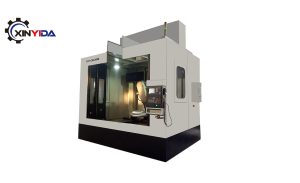In the world of manufacturing, achieving a high-quality finish on components is crucial. Polishing is an essential process that enhances both the aesthetic appeal and functional performance of products. With the advancement of technology, CNC (Computer Numerical Control) polishing machines have emerged as a popular choice among manufacturers. This article explores how CNC polishing machines compare to traditional polishing methods and other automated polishing equipment, highlighting their advantages and disadvantages.
Understanding Polishing Methods
Traditional Polishing
Traditional polishing involves manual processes where operators use tools such as buffing wheels, polishing pads, and abrasive compounds to achieve a smooth finish. This method relies heavily on the skill and experience of the operator, which can lead to variability in the results. While traditional polishing is often cost-effective for small batches or one-off pieces, it has limitations in terms of efficiency and consistency, particularly in high-volume production settings.
Automated Polishing
Automated polishing equipment has been designed to enhance efficiency and consistency. These machines often utilize fixed processes and may involve robotic arms or conveyor systems. While automated solutions can significantly reduce labor costs and increase throughput, they may lack the precision required for intricate designs and complex geometries.
CNC Polishing Machines
CNC polishing machines, on the other hand, combine automation with advanced programming capabilities. These machines can be programmed to execute intricate polishing tasks with high precision and consistency. CNC technology allows for the manipulation of multiple axes, enabling the polishing of complex shapes and varying surface textures.
Key Comparisons
- Precision and Consistency
CNC Polishing Machines: One of the standout features of CNC polishing machines is their precision. The computer-controlled mechanisms ensure that every piece receives the same level of polishing, which is critical for industries requiring exact specifications, such as aerospace and automotive.
Traditional Polishing: This method often results in variability due to the human factor. The quality of the finish can differ from one operator to another, leading to inconsistencies, especially in larger batches.
Automated Polishing: While these machines provide better consistency than manual methods, they may not match the high precision offered by CNC buffing machine. Fixed paths may limit their ability to adapt to complex shapes without additional programming.
- Efficiency and Throughput
CNC Polishing Machines: These machines excel in efficiency, especially for large production runs. They can operate continuously, reducing downtime and maximizing output. The ability to program multiple polishing tasks also contributes to their efficiency.
Traditional Polishing: Manual polishing is time-consuming and labor-intensive. Each piece requires individual attention, which can significantly slow down production rates, making it less viable for high-volume manufacturing.
Automated Polishing: While faster than manual methods, automated polishing equipment can still fall short compared to CNC systems. The speed depends on the complexity of the task and the capabilities of the machine.
- Flexibility and Adaptability
CNC Polishing Machines: The programming flexibility of CNC machines allows manufacturers to quickly switch between different tasks and designs. This adaptability makes them ideal for custom work or varying production requirements.
Traditional Polishing: Flexibility in traditional polishing is limited. Each new design may require retraining operators or adjusting techniques, leading to potential delays.
Automated Polishing: Depending on the system, automated polishing machines may require substantial reconfiguration to accommodate different tasks, reducing their adaptability compared to CNC machines.
- Cost Considerations
CNC Polishing Machines: The initial investment in CNC technology can be high, but the long-term savings in labor costs and increased productivity often justify this expense. For companies focusing on high-volume production, CNC machines can lead to significant cost efficiencies.
Traditional Polishing: Lower initial costs make traditional polishing appealing for small businesses or niche markets. However, the higher labor costs and potential for inconsistent quality can lead to greater expenses over time.
Automated Polishing: Automated systems generally fall between traditional and CNC machines in terms of cost. While they require a notable investment, they can reduce labor costs and improve efficiency, making them a viable option for many manufacturers.
- Surface Quality
CNC Polishing Machines: These machines provide a superior surface finish due to their precise control and ability to handle complex geometries. The results often exceed those achieved by traditional or automated polishing methods.
Traditional Polishing: While skilled operators can achieve high-quality finishes, the inconsistency of manual techniques can lead to varied results across a batch of products.
Automated Polishing: The quality of the finish from automated systems can vary based on machine capabilities. While they can produce good results, they may not reach the surface quality offered by CNC polishing.
Conclusion
CNC polishing machines represent a significant advancement in polishing technology, offering unmatched precision, efficiency, and adaptability compared to traditional methods and other automated equipment. While the initial investment may be higher, the long-term benefits of consistent quality and reduced labor costs make CNC machines a worthwhile consideration for manufacturers aiming for excellence in their production processes.
When deciding on a polishing method, businesses should weigh their specific needs, including production volume, budget constraints, and the required quality of finish. Ultimately, CNC polishing machines stand out as a leading choice for those looking to enhance their manufacturing capabilities while ensuring superior product quality.

